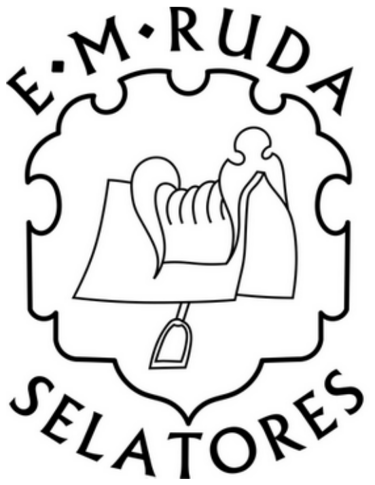WINGED HUSSAR SADDLES
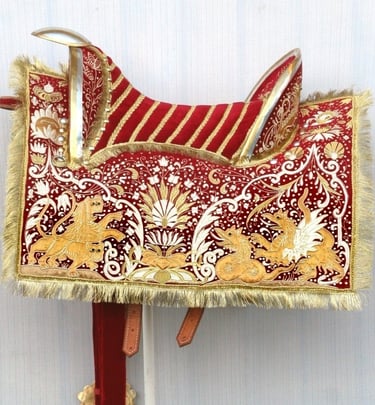



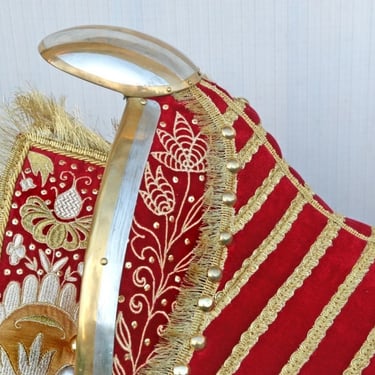
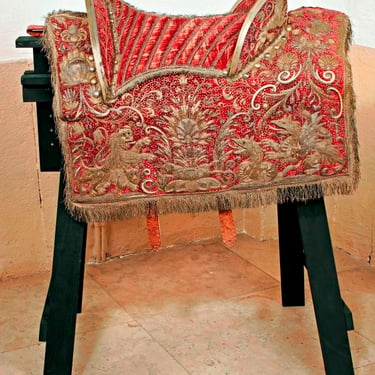
SADDLE no.1 (17th c.) Price to be agreed
Based on saddle belonging to the Zygmunt III Waza. The saddle tree covered with canvas and birch bark uderside and covered witch red velvet, embroidery and brass fittings.
These are the first thoroughly reconstructed winged hussar saddles. The reconstruction is based on artefacts and icons, taking into account the internal structure, i.e. the saddle tree and the pillows. Thanks to the 3D modelling and CNC technology, the shape of the saddle tree and the seat profile of the surviving originals can be accurately reproduced. A great contribution to expand knowledge about this equipment was made by Radosław Sikora PHD by providing a lot of graphics and icons. He is an author of history books about Polish winged hussars. Acquired pictures and iconography help us to understand how the base of the hussar saddle (i.e. saddle tree) was constructed, how the pillows were fixed, what materials were used. They truly show the metal decorations and embroidery, the types of the girths fastening, fixing of the harness, the mounting point of the stirrups, glued canvas, and birch bark.
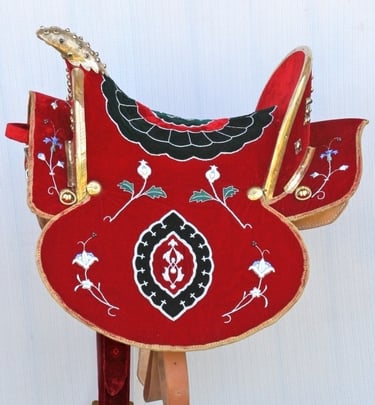



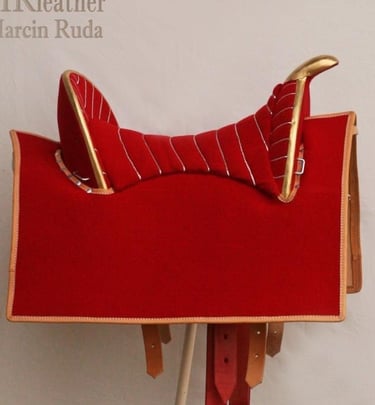

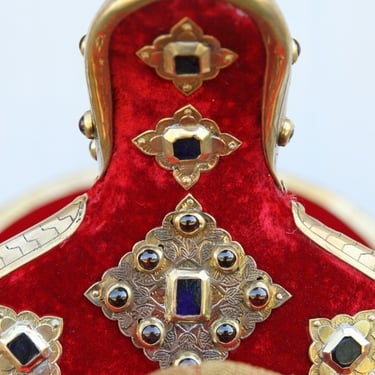

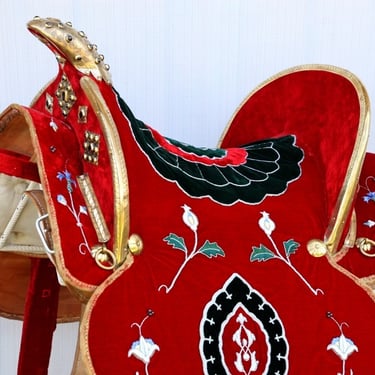
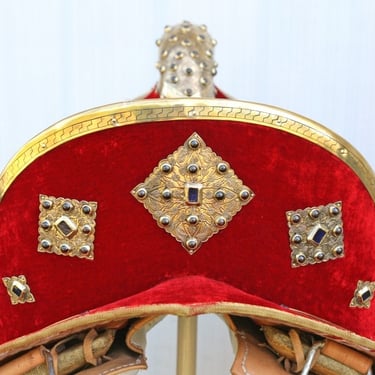
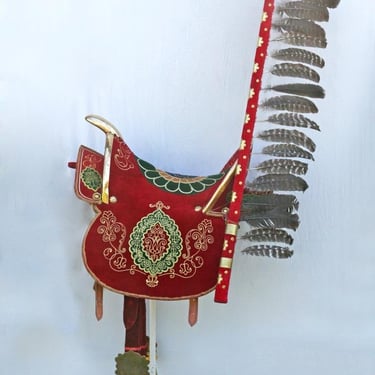

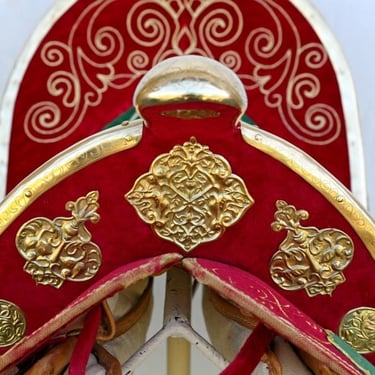
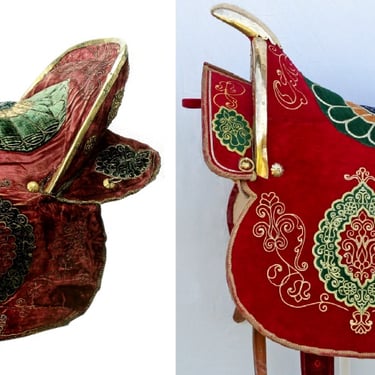
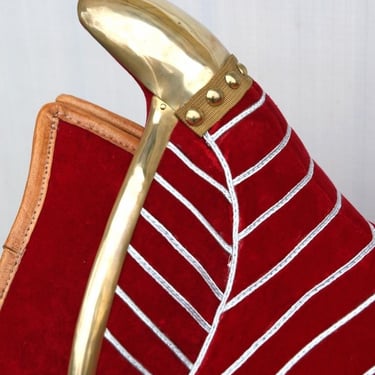

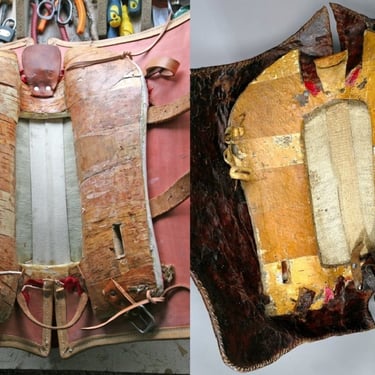

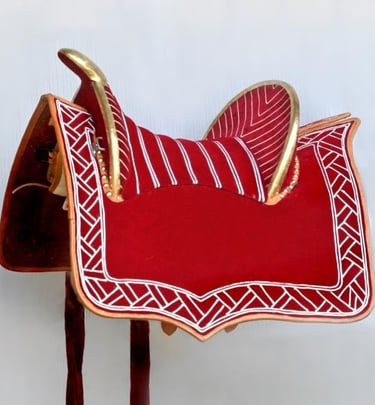

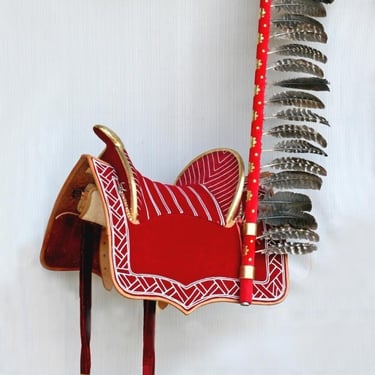
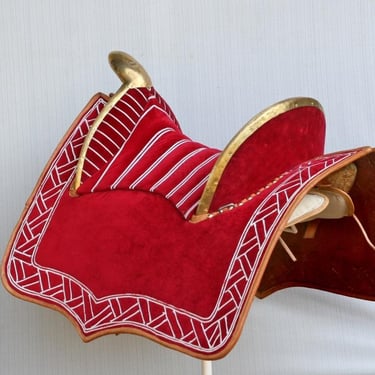
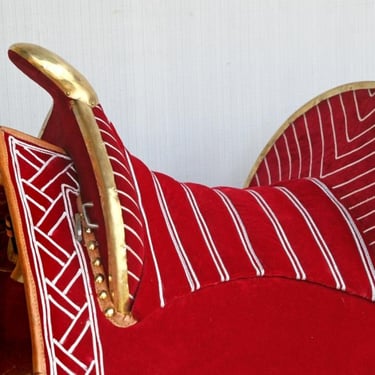
SADDLE no.5 (17th c.) - 2250 Є
Reconstruction based on saddle located at Stockholm museum. Saddle tree covered with canvas and birch bark uderside. Saddle covered with red velvet and brass fittings. Under saddle there are pillows filled with natural wool.
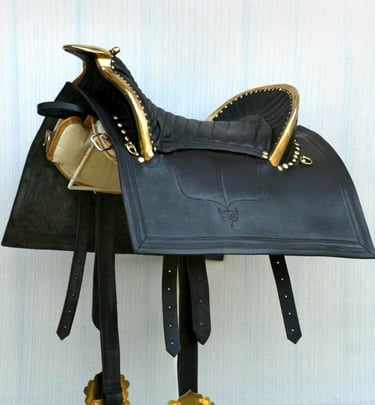

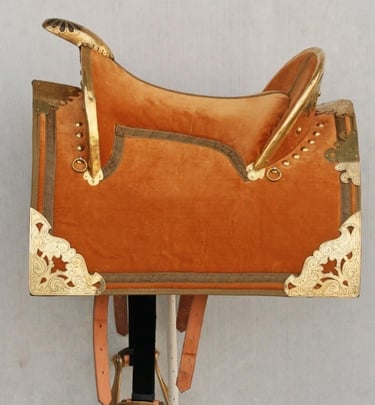

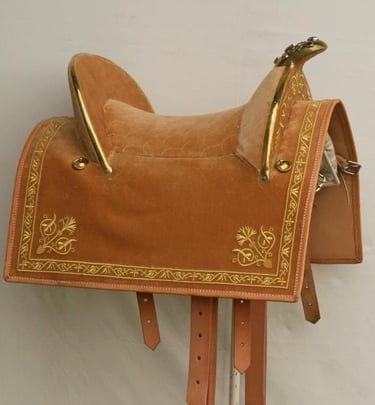



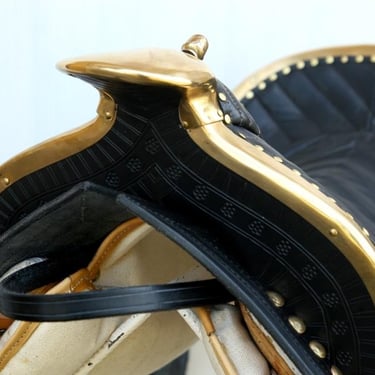



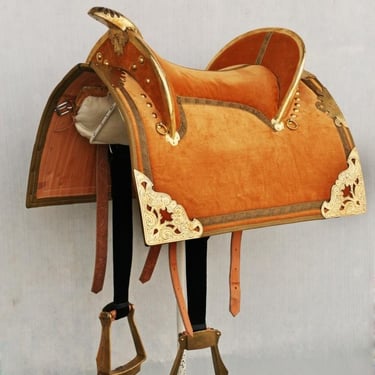
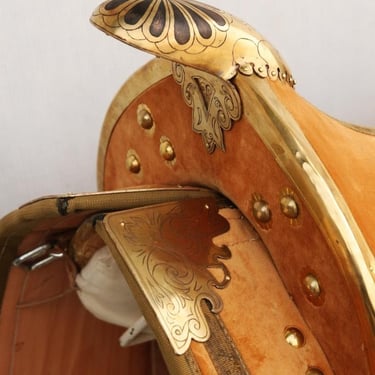
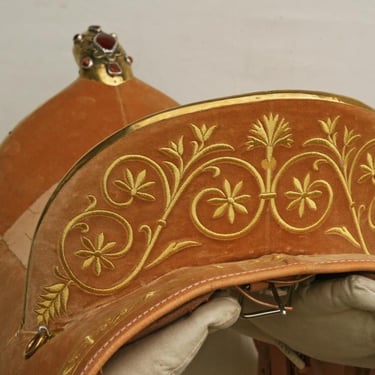
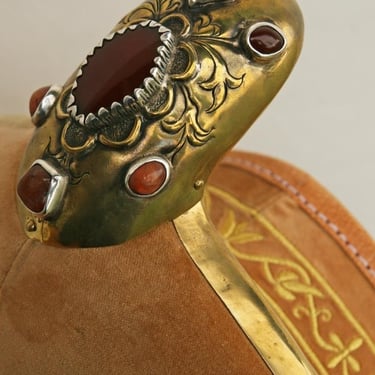
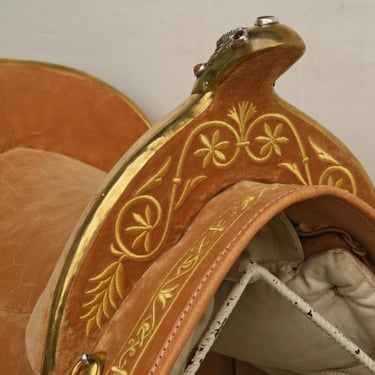

SADDLE no.7 (17th c.) - 3700 Є
In book 'Temesváry Ferenc: Díszes nyergek, lószerszámok' 1995 it is called Hungarian type saddle form 17th c. The saddle covered with velvet and birch bark uderside.

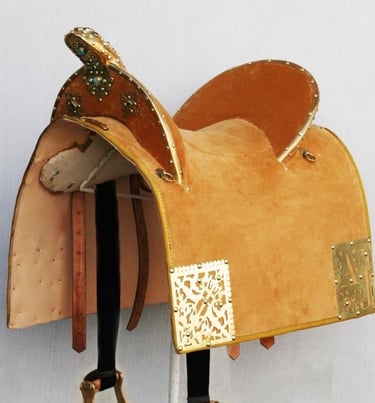
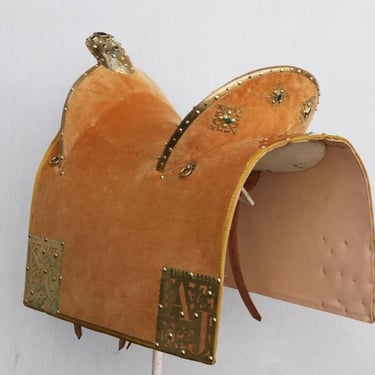
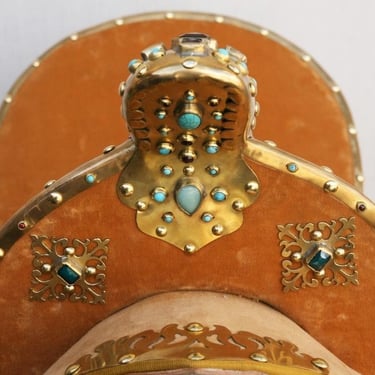



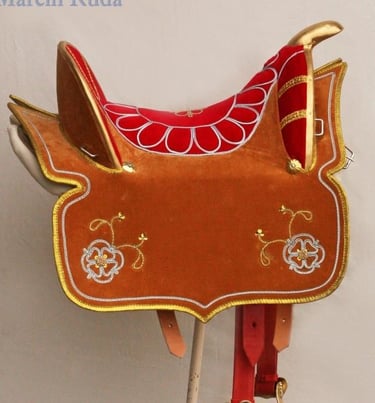

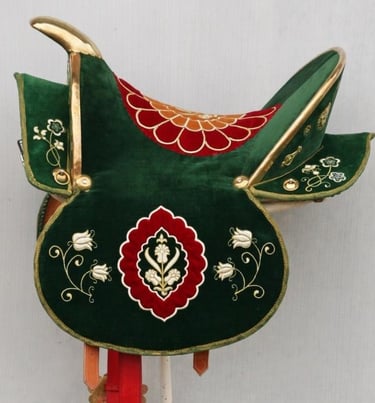
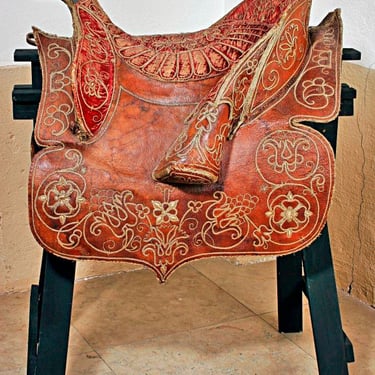

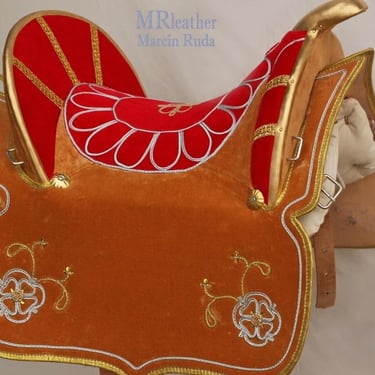


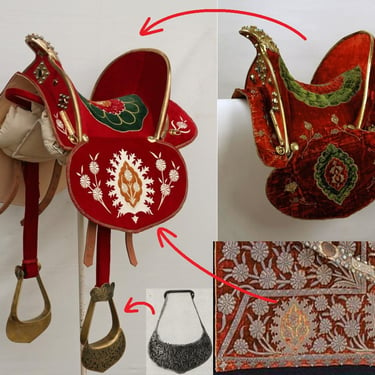
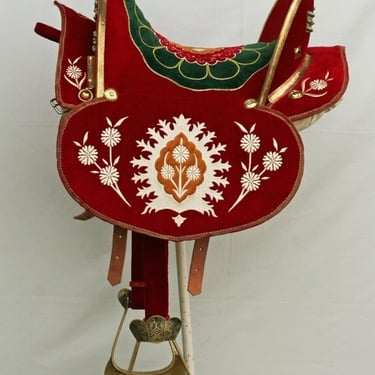
SADDLE no.11 (circa 1600) - 3750 Є
Reconstruction based on 'Rolka Sztokholmska' - 1605. Based also on Polish saddles from Kremlin (circa 1600). Saddle tree covered with canvas and birch bark uderside and finished with velvet and brass fittings.
At the customer's request we send the saddle tree to check the fit to the horse's back.
The tree is also prepared to ride and after checking and accepting everything the saddle is finished.
SADDLE no.2 (17th c.) - 3850 Є
Based on the saddle located at Kremlin museum. The tree covered with birch bark uderside. Finished with red velvet, embroidery and brass fittings. There are pillows filled with natural wool.
SADDLE no.4 (17th c.) - 1800 Є
Based on saddle located at Stockholm museum. The tree covered with canvas and birch bark uderside. Finished with red velvet or wool and brass fittings. Under saddle there are pillows filled with natural wool.
SADDLE no.3 (17th c.) - 3750 Є
Based on the saddle located at Kremlin museum. The tree covered with birch bark uderside. Finished with red velvet, embroidery and brass fittings. There are pillows filled with natural wool.
SADDLE no.6 (17th c.) - 3500 Є
Reconstruction based on saddle located at Stockholm museum. Saddle tree covered with canvas and birch bark uderside. Saddle covered with leather and brass fittings. Under saddle there are pillows filled with natural wool.
SADDLE no.9 (17th c.) - 3700 Є
In book 'Temesváry Ferenc: Díszes nyergek, lószerszámok' 1995 it is called Hungarian type saddle form 17th c. The saddle covered with velvet, gems, brass decorations and birch bark uderside.
SADDLE no.10 (17th c.) - 2400 Є
Reconstruction based on saddle located at Stockholm museum. Saddle tree covered with canvas and birch bark uderside. Saddle covered with red velvet and brass fittings. Under saddle there are pillows filled with natural wool.
SADDLE no.8 (16th c.) - 3750 Є
Based on the book 'Temesváry Ferenc: Díszes nyergek, lószerszámok' 1995 it is called Hungarian type saddle form 16th c. The saddle covered with velvet and brass, embroidery.
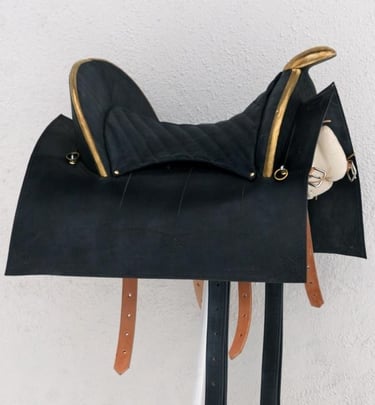



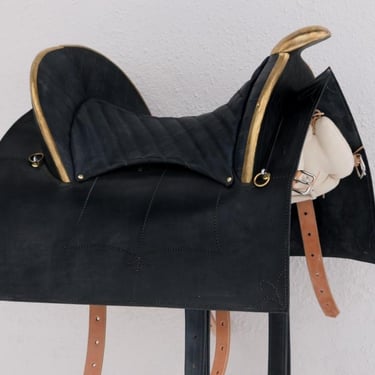
SADDLE no.12 - 2800 Є
Based on saddle located at Stockholm museum. The tree covered with fabric. Finished with black leather and tinned brass fittings. Under saddle there are panels filled with natural wool.
